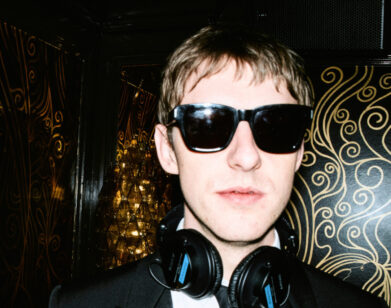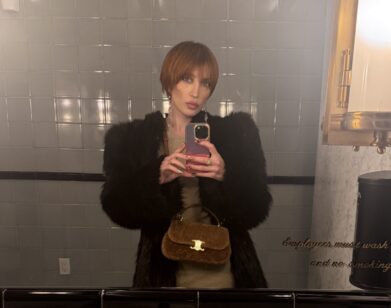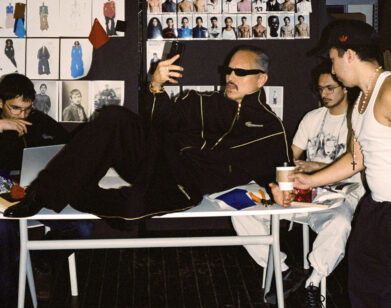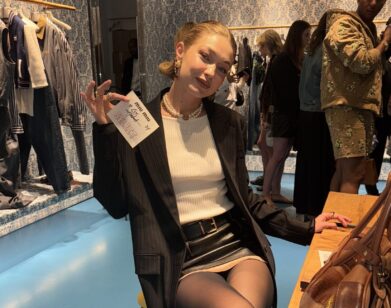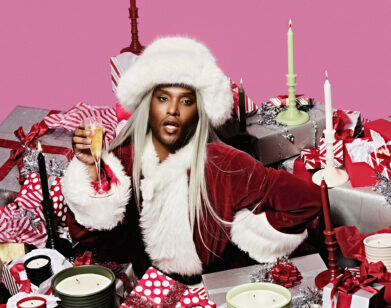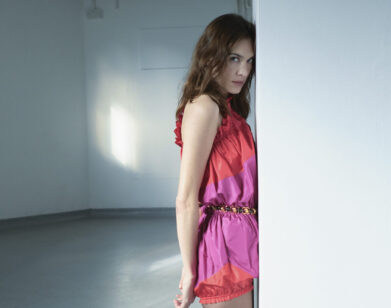The Look: China Machado
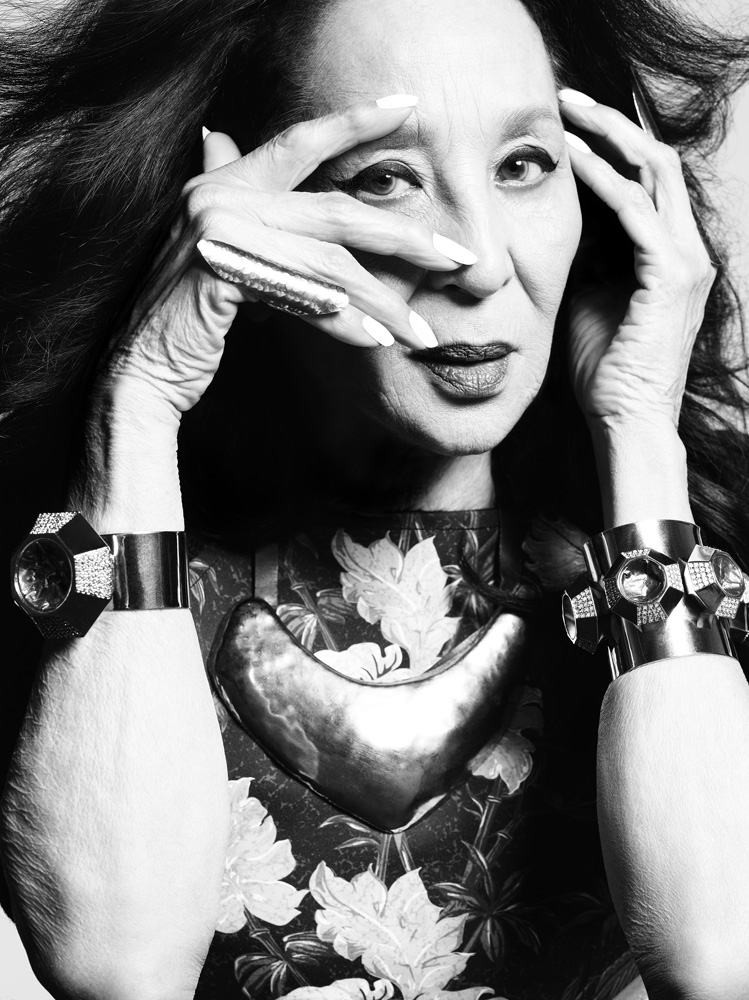
ABOVE: CHINA MACHADO. PHOTO: MOO KING.
In the early ’00s, Estee Lauder chairman Leonard Lauder coined the term “lipstick index” as a way to gauge women’s spending habits during the post-9/11 recession. But lately, with drugstore and designer cosmetics brands alike diversifying polish colors and textures, and posh nail bars popping up from New York to Tokyo, nails are the fetishized body part du jour. China Machado, who was born in Shanghai to a Chinese mother and a Portuguese father, knows a thing or two about being en vogue—the first non-Caucasian model to appear on the cover of Harper’s Bazaar, in 1959, she walked for Givenchy and Balenciaga during the height of the salon presentation, becoming the highest-paid runway model in Europe before entering upon a decades-long collaboration with Richard Avedon, first as a model and then as Bazaar’s fashion editor from 1962 to 1972. She also hasn’t had a professional manicure in 20 years.
HARRY BRANT: I found out you were born in Shanghai.
CHINA MACHADO: Growing up, I was aware that, during the Ming Dynasty, long nails were a status symbol—if you had them, you didn’t do any practical work.
BRANT: You can’t exactly clean when you have talons.
MACHADO: [laughs] You’d just call somebody. I’m still the practical person. I think that your nails shouldn’t be so long that you can’t close your fist. When I go to the supermarket and I see a woman with nails of about an inch and a half long, I can’t believe she’s doing that. I’m saying, “Well, does she cook?” Because if you cook, how are you going do it with those nails?
BRANT: Now nail art has reached every social circle among women. My friends Instagram pictures after they go to the salon—these really intricate designs that have letters and writing on them and express their political beliefs about everything.
MACHADO: Right.
BRANT: There’s nothing more dreadful than when someone says, “Oh, no. I can’t do that. I had a manicure done and I’m going to ruin my nail art.”
MACHADO: Do these girls do any housework at all, even washing dishes? [laughs]
BRANT: They can’t do anything.
MACHADO: Helena Rubinstein used to call [Revlon founder] Charles Revson “that nail man.” He was the one who sold more nail polish than everybody else, I presume. I painted my own nails ever since I can remember, and I always used red nail polish. I think that your nail color should depend on the color of your skin. I use Nars because they have a wonderful dark red color. That’s about as far into it as I’m willing to go because I don’t drive. I live on the beach, so I can’t have my husband drive me to a salon and pick me up—it’s too much.
BRANT: Now I see a lot of women doing the talons, where they style their nails to a point, almost like a witch. There was briefly a beauty trend when people would grow one nail long and style it to a really sharp point. Now it’s every finger, like men do in China.
MACHADO: I don’t know how much men like nail art.
BRANT: I don’t think they do.
MACHADO: Most men prefer the natural look. But in the back of their minds, they might find it a little sexy. It depends upon the woman.
BRANT: I think red proves to be one of the exceptions, but generally, men prefer a natural look, even in clothes. That’s why Azzedine Alaïa is so successful. I’ve never met a man who doesn’t think a woman looks attractive in Alaïa. It highlights the woman’s curves and the form is utterly flattering to the female. It’s very simple. The more adventurous things, like the witch nail, women are doing for other women.
MACHADO: Before this craze started, maybe about even 10 years ago, it was all little girls getting pink on their nails. It was like Barbie, a girly thing. And now it’s the grown-up girls who are doing it.
BRANT: It’s fairly inexpensive to do.
MACHADO: It’s like buying a lipstick.
BRANT: I just can’t remember the last time I saw a trend that took over an entire industry, the entire nail industry. Well, I guess eyebrows.
MACHADO: An eyebrow craze is more obvious because it’s on the face. You can flutter your nails around and make them dance, but I think it’s between girls, not between a girl and a man.
BRANT: It’s almost that they want respect, respect that gets associated with having the newest, trendiest thing and looking a certain way.
MACHADO: When people ask me about modeling, what it was like, I say, “It was fabulous!” If you can use it in the right way—to travel to meet other people, to learn how to dress, to make some money—I think it’s great. But I also think it takes girls. If they don’t know how to handle themselves, or if they do it just for a little time and are not successful, then they get terribly depressed about themselves.
BRANT: It’s a double-edged sword. One of the saddest things in modeling is that the girls are not protected in any sense. I read that when you were modeling, you made $1,000 dollars a day, which was the highest paid for a runway model at the time.
MACHADO: That’s right.
BRANT: And, at that time, people didn’t see runway pictures all over the news. You didn’t get a lot of media exposure from it.
MACHADO: Hubert de Givenchy would not allow the press in the show. He was afraid that once the photographs were taken, it would be copied.
BRANT: Which happens now.
MACHADO: We didn’t see the press. The press was not allowed to come to the shows—they bothered Givenchy. And don’t forget, I started in 1954, so it was a long time ago, Harry. When I was modeling, you were walking to show the clothes, so every dress you wore, you had to find a different walk, because you were showing a different dress.
BRANT: I think one thing that always differentiates a good model from a great model is personality—some unconventional element beyond just the look.

